Washington is most notably known for cloud-covered, dreary Seattle, but this northwestern state has much to offer, including lush landscapes and a diverse range of animals. This region of the country is an old-growth forest but includes habitats such as prairies, wetlands, rainforests, estuaries, marine water, and grasslands. Incredible animal diversity lives within its borders, including speedy creatures found on land, sea, and air. Discover the fastest animals in Washington, including where you can find them and what makes them so swift.
Marbled Murrelet

Marbled murrelets spend most of their time at sea but travel around 50 miles inland to nest.
©John Yunker/Shutterstock.com
Marbled murrelets are small diving seabirds endemic to the Pacific Northwest, where it inhabits old-growth forests and coastal waters. Washington state listed this species as endangered in 2016 due to habitat loss and fragmentation. They spend most of their time at sea but travel around 50 miles inland to nest. These chunky birds are exceptionally fast, reaching up to 100 miles per hour! They can rapidly dive and use their stubby wings to “fly” underwater to pursue their prey. Not much is known about this species, but their broad, paddle-like wings aid them in their excessive speeds.
Lynx
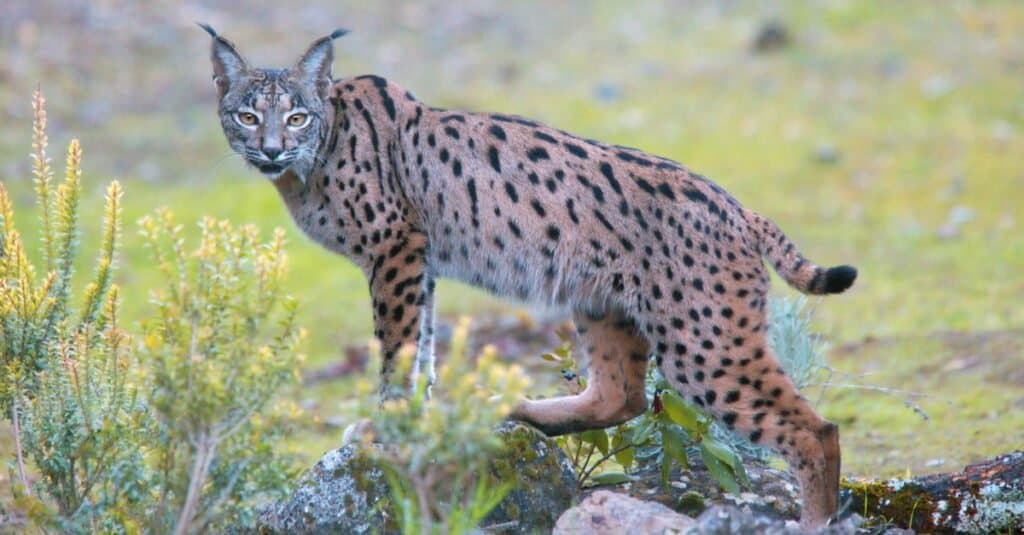
Lynx
can run faster than humans and pets, reaching 50 miles per hour.
©tony mills/Shutterstock.com
Lynx are medium-sized wildcats native to North America and inhabit Canada and the Northern United States. These cats are rare in Washington and mainly live in the state’s northern counties in moist, boreal forests. They can run faster than humans and pets, reaching 50 miles per hour. They spring off their back legs to start and can leap vertically up to six feet. These cats have short yet powerful legs and large, round feet that keep them from slipping through the snow. The lynx has to be fast to keep up with its preferred prey, the snowshoe hare, which can also run 50 mph.
Willow Goldfinch
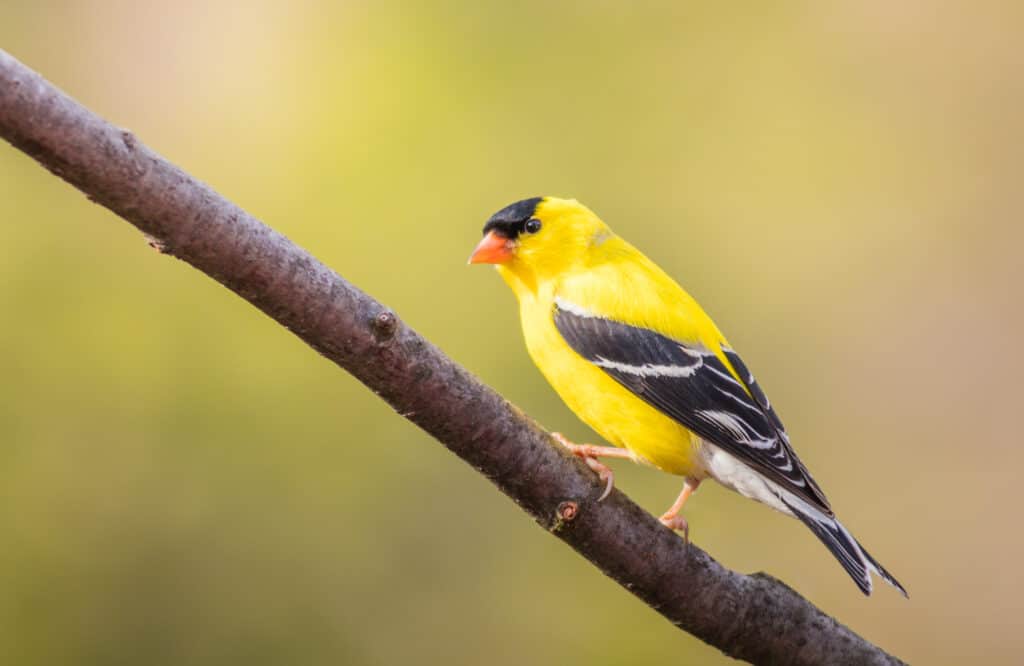
The American goldfinch is the fastest
swallow
and can reach 47 miles per hour.
©Rabbitti/Shutterstock.com
The willow goldfinch, also known as the American goldfinch, is a small migratory bird native to North America. These bright yellow finches spend their summers across Washington, inhabiting backyards, floodplains, weedy fields, and most semi-open areas with weedy ground. The American goldfinch is the fastest swallow and can reach 47 miles per hour, covering an extensive range in a short amount of time. These birds are highly active and acrobatic and will change positions rapidly to find suitable food and habitats.
Steelhead Trout
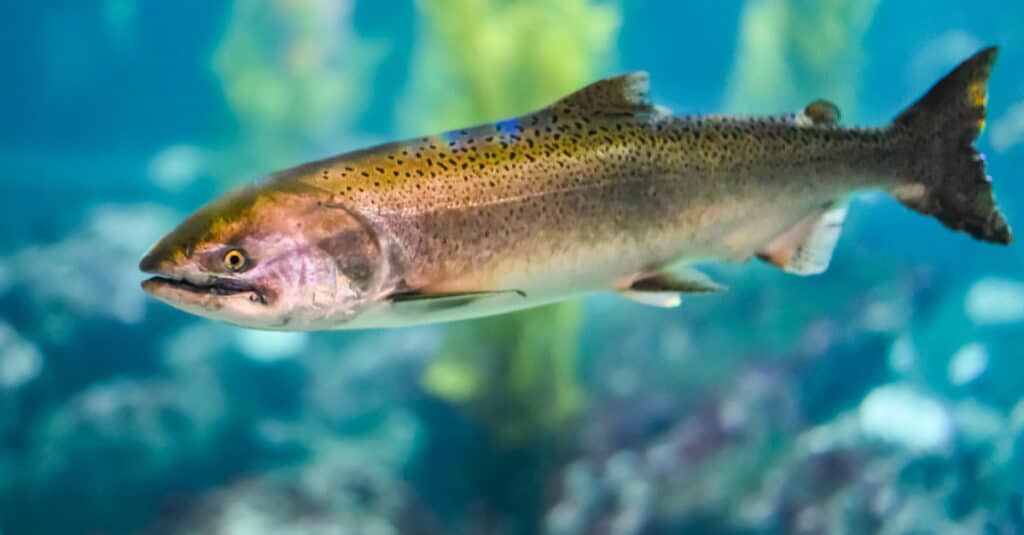
Steelhead
trout’s
cruising speed (average) is around 35 miles per hour.
©David A Litman/Shutterstock.com
Steelhead trout are the anadromous form of rainbow trout, meaning they swim to saltwater to live their lives versus staying in freshwater. You can find them on Washington’s coasts, harbors, and river basins. Steelheads are impressive fish that gives fishermen a run for their money and have been coined “swimming racecars.” These fish have not been adequately clocked at their max speeds, but their cruising speed (average) is around 35 miles per hour. A rate much faster than most fish. And they can also leap up to 11 feet out of the water near waterfalls! This species is very muscular and flexible, quickly jetting through the water.
Green Darner Dragonfly

Green darner
dragonflies
are most comfortable three feet above land or water, flying up to 35 miles per hour.
©Photoongraphy/Shutterstock.com
Green darner dragonflies are one of North America’s most common and abundant species. It is the state insect of Washington and is abundant throughout the state, highly revered for its large size and fast-flying abilities. These dragonflies are most comfortable three feet above land or water, flying up to 35 miles per hour, faster than the speediest human to ever exist. Dragonflies are the only invertebrates that can fly, thanks to their lightweight exoskeletons and well-developed nervous and sensory systems. They can also hover for small amounts of time by flapping their wings more than 30 times per second.
Orca
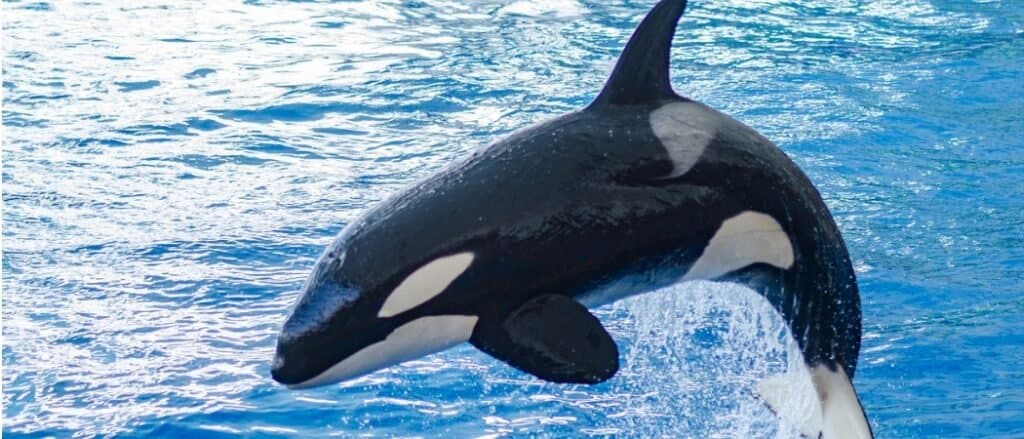
Killer whales
are the second fastest marine mammal on earth and can swim up to 35 miles per hour.
©Alexander Baumann/Shutterstock.com
Orcas, also known as killer whales, are the largest of the dolphin family and reside across all oceans. They are most abundant in cold water and can be found in Washington’s marine areas near islands. Killer whales are the second fastest marine mammal on earth and can swim up to 35 miles per hour. However, they only reach these max speeds for a few seconds. Their average rate is much slower at eight mph when cruising. Their bodies may be less streamlined than dolphins, but they have powerful tails that propel them through the ocean.
Pika
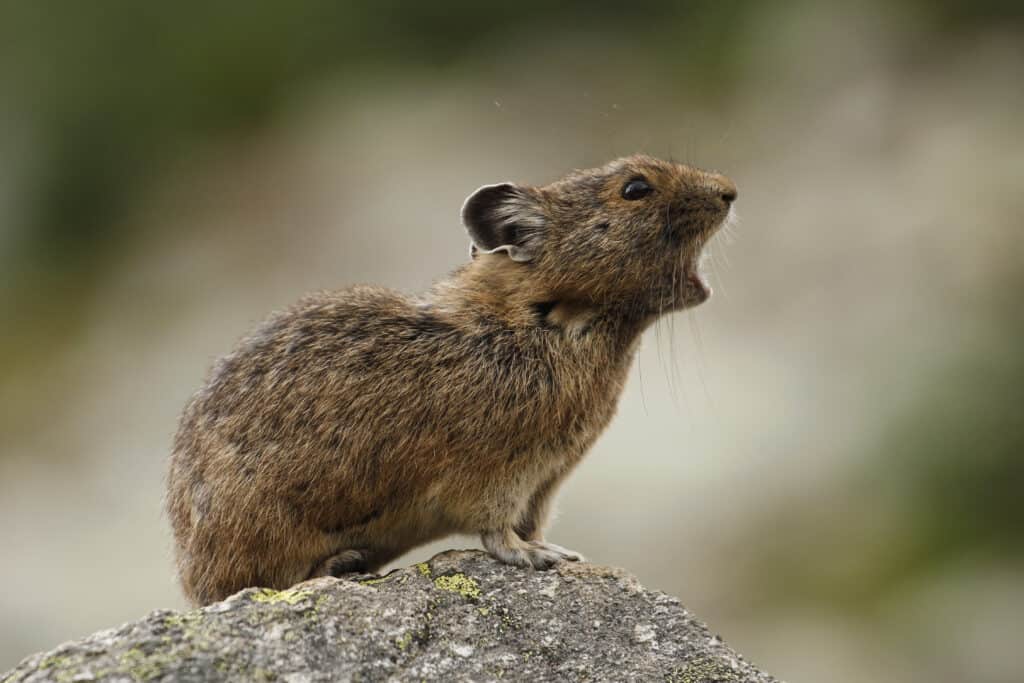
Pika
can efficiently run 15 miles per hour, using their sharp, curved claws to climb from rock to rock.
©iStock.com/Shayne Kaye
Pikas are small, rodent-like mammals from the rabbit family. They are native to Asia and North America, where they inhabit cool, moist mountains. You can find them in the Cascades and northeast regions of Washington, living around boulders and rock piles. While not as speedy as the other creatures on this list, these little guys can reach impressive speeds relative to their size. Pika can efficiently run 15 miles per hour, using their sharp, curved claws to climb from rock to rock. They are elusive animals, zipping past predators and hiding behind rocks.
Up Next:
- Discover the Fastest Animals in Minnesota
- Discover the Fastest Animals in Missouri
- Discover the Fastest Animals in California
The photo featured at the top of this post is © slowmotiongli/Shutterstock.com
Thank you for reading! Have some feedback for us? Contact the AZ Animals editorial team.







